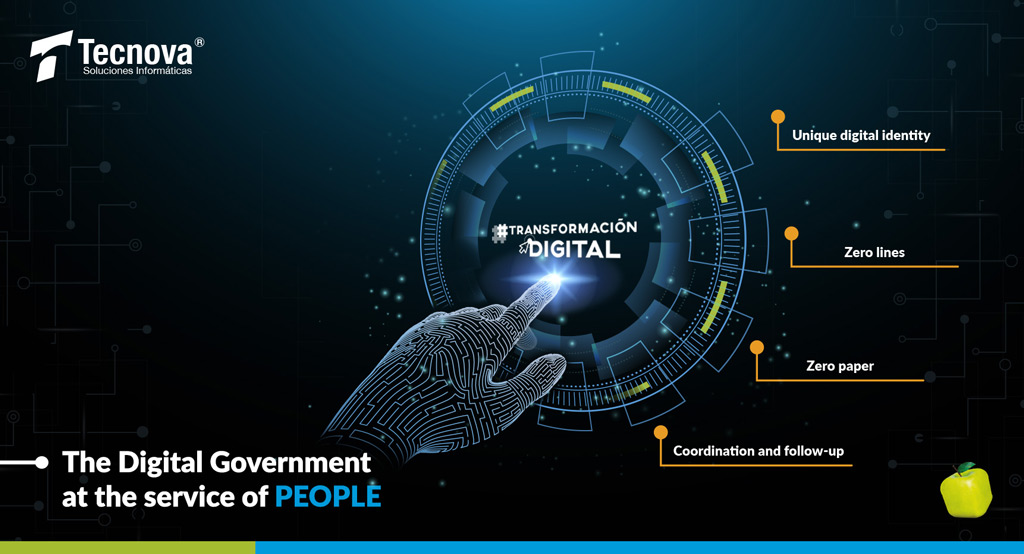Goals for The State’s Digital Transformation

The state digital transformation has been a government priority. The Consejo Asesor Permanente para la Modernización del Estado, established in June 2018, aimed to propose 50 measures to transform state processes.
Within them, the obligation of a law to implement the digitization of public services arose.
On September 11, 2019, the Chamber of Deputies released the State’s Digital Transformation Bill. According to Emol, it “establishes the interoperability of public services, preventing individuals from having to present certificates that are issued by other state institutions.
This new law has a number of measures such as: National Digital Archive to record and store information, electronic notifications, recognition of the validity of digitized documents and modernizes the Civil Registry.
However, some of these initiatives already have guidelines. On January 24, 2019, through a presidential instruction, the government advanced on 4 pillars for the State Digital Transformation. In rigor, these are goals that the public administration must meet in order to achieve digital transformation.
Do you want to know what they are? Let´s Review!
Unique digital identity
According to the instructions, “public services may only use the Unique Key (Clave Única) as a digital identification tool for natural persons, replacing any other self-authentication system.
The Unique key consists of a digital identification mechanism that allows citizens to access all state services through a single password. According to government figures, it currently has “more than four and a half million active users and is used by 166 institutions for more than 360 different formalities, generating over 200 thousand transactions to date.
The ultimate goal is for all state agencies to migrate their authentication systems to the Unique Key. This measure shall be implemented by 31 December 2020.
Zero Lines
The mandate of the instruction is that public services must eliminate unnecessary formalities and digitize at least 80% of them by December31, 2021, and 100% by December 31, 2023. In this way, “public services may not require documentation from the citizen, which is already in the possession of the State, taking the necessary measures to interoperate and access the required information”.
This measure aims to decrease the time that a person makes a formality in the State. According to the government “a citizen performs 8 average formalities every year with the central government. Each of these has an average duration of 2.2 hours, that is, a person spends at least 16 hours a year only on formalities.
Zero Paper
The instructions indicate that “public services should phase out paper use, with the aim of modernizing and increasing management efficiency,” this means Zero paper. The government states that all public service communications “should be 100% digital and managed through a new State platform no later than December 31, 2019”.
In addition to the environmental and residual reason involved in having paper, the government has statistics to reach the Zero Paper. According to the government, “80% of public institutions manage their purchase procedures on paper.” Therefore, this policy aims to save “up to $1.1 billion in hour/man value devoted to paper collection.
An example of this has been the implementation of the Electronic Administrative Procedure (PAE) in the Superintendencia de Seguridad Social (Suseso). There, Tecnova was the technology partner that provided support for electronic procedures, such as web user complaints. Thus, it saves paper and “includes artificial intelligence solutions, for the prediction of claims (advance knowledge of whom will claim) and the proposal of resolutions”, which translates into shorter response times to the citizenry.
Coordination and follow-up
One of the government´s last instructions was that the heads of different public administration services should appoint an Institutional Coordinator for Digital Transformation. It will be responsible for developing and managing the Digital Transformation Plan in the respective distribution.
In addition, the Digital Government will follow the progress and implementation of initiatives by institution and the enabling of “mechanisms of citizen participation for the prioritization of formalities”. Finally, this Coordinator will have the power to “officiate public institutions in the above aspects”.
So far, 91% of institutions have registered their Digital Transformation Coordinator.
What’s left to do?
Currently the State has already digitalized 3,517 formalities as of October 31, 2019, corresponding to 49.25% of the paperwork digitized in 213 institutions. The Government’s goal is that by 2021, it will reach 80%.
Tecnova has been a partner to develop the Digital Government. Solutions in services such as Software Factory, Outsourcing IT, Operational Continuity, QA Service and Cybersecurity are part of the needs of the State’s Digital Transformation.








